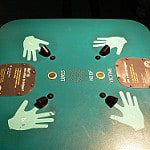by therapyinsdcom | Apr 27, 2017 | Cognitive Behavioral Therapy, Uncategorized
It’s sunblock and swimsuit time in San Diego! Most of us are making sure we have our summer essentials in place, and pretty soon it will be time do your favorite summer activities! Like clockwork, my clients begin to express anxiety about an upcoming pool party or BBQ where they may be wearing a lot less than they have in the last few months. I’m getting the annual calls asking, “Can I use CBT for weight loss?”, and more often, “I can lose the weight but gain it right back, how can you help me?”.
If you’ve never lost a pound or if you’ve successfully lost weight only to gain it back, you are certainly not alone. Cutting calories, exercising more, and watching your carbs is not enough on their own. Almost everyone knows what they need to do to lose weight, but may not be clear on how to make it happen. The most powerful aspect of moving towards a healthy body is a change in mindset. Knowing that each individual has their own reasons for wanting to change, what works for one client will almost certainly not work for everyone. Creating a specific plan, tailored to your unique thought process, can make a significant difference in effective weight loss.
What is the best diet plan for weight loss?
 You can use any reasonable diet you want- when you pair it with new habits of thought you will see it work. The question is not simply ‘What is the best weight loss plan?’, but rather- ‘How can I think differently about myself and my health?’. This is where cognitive behavioral therapy (CBT) comes into play, as it guides you to focus on changing your perceptions of yourself and replace sabotaging thoughts, which can lead to massive long-term changes in your health.
You can use any reasonable diet you want- when you pair it with new habits of thought you will see it work. The question is not simply ‘What is the best weight loss plan?’, but rather- ‘How can I think differently about myself and my health?’. This is where cognitive behavioral therapy (CBT) comes into play, as it guides you to focus on changing your perceptions of yourself and replace sabotaging thoughts, which can lead to massive long-term changes in your health.
Do this first before anything else….
One of the first exercises I complete with clients is to create an ‘advantages’ card, which is outlined with more detail in Judith Beck’s book outlining CBT for weight loss, The Beck Diet Solution. When you write down the reasons you want to lose weight, it can really add a boost to your motivation. Looking at it a couple of times a day can build excitement in reaching your big goal. The advantages card is your ‘eyes on the prize’ reminder, and whenever you hear yourself saying “One donut won’t hurt”, you pull out your handy card out to kindly remind you what you truly want. The more you conquer your cravings, the more confident you will become in knowing you can do this!
Messed up? Excellent!
Relapse is part and parcel of changing any habit- it’s also one of the most exciting opportunities for change. Now is when your new CBT for weight loss skills are put to the test, as you begin to see how to shift your behaviors and habits that combat those negative, self-sabotaging thoughts. We only change when we are uncomfortable, so when you are struggling or simply doubting yourself this is when the magic happens. Most of us are much more capable than we give ourselves credit for; imagine how pushing yourself through this challenge will confirm strong you really are. This is the time to use your supports to boost you up and let you know you can do it!
If you’re reading this, it’s likely that you’ve already discovered that establishing weight loss plans on without outside help often doesn’t produce the results you aim for. Evaluating and making shifts in the way you look at your problem can create a long-lasting solution that will not only help you lose weight, but also help you recognize skills and resources within you that can be useful in any aspect of your life.
Like this article about CBT for weight loss? Here is a similar blog from the archive:
Cognitive Behavioral Therapy for Weight Loss
by therapyinsdcom | Mar 27, 2017 | Anxiety, Cognitive Behavioral Therapy, Depression

Positive psychologists and cognitive behavioral therapists promote certain behaviors that prime the brain for happiness.
Shawn Achor is one of my personal heroes- you may have heard of him as the author of ‘The Happiness Advantage’ or through his infamous TED Talk which you can find here. After almost a half a century in the making, positive psychology is sweeping the mental health landscape and I couldn’t be more thrilled. Cognitive behavioral therapists, educators and behavioral scientists are adopting techniques, such as the ‘happiness advantage’ to help people shift their mindset towards the good.
A Cognitive Therapist’s Answer to “Why Can’t I Find Happiness?”
‘Happiness’ makes many think of smiles, the sunshine, material acquisitions, and absolute bliss. People often perceive ‘happy’ as being beyond our control, that it has to do with external factors or some level of intangible success. However, when you depend on external factors to reach this mysterious state, you set yourself up for fleeting joy but also long-term disappointment, which can lead to depression and anxiety.
Contentment does not have to be controlled by external factors, what you have achieved, or what you or someone else consider the ultimate success. Rather than telling yourself that happiness is something to wait for, or believing that a partner, weight loss, or more money will lead you there, you can train your brain to be positive in the here and now. According to Shawn, if your brain is focused on positivity, it performs 31% more productively than when it is negative, neutral, or stressed. With the happiness advantage, your intelligence, creativity, and energy levels rise. That said, it makes much more sense to focus on how happiness leads to success, instead of the other way around.
It makes sense that managing depression and anxiety can be approached in a different and more effective way- by creating a new internal reality. As you learn how to become more positive in the present, the solution may not seem as hard to achieve. Training your brain to be more positive is something you’ve already taught it to do other tasks until it becomes automatic. Have you ever catch your fingers hitting the ‘F’ for Facebook without even noticing? Reaching for the snooze button? These are both common examples of automatic thoughts.
Let’s Get Happy!
Over time, reversing your formula for happiness in the now and leading your brain to focus on the present and the positive aspects is a mighty force. The trick is to act differently right now, and your brain will begin to become primed for success, which means that you will be able to work harder, faster, and more intelligently in the moment as well as long-term. One of the ways that your brain can be trained is to encourage the release of dopamine, which is a vital ‘feel good’ hormone. Dopamine has two functions: first, to make you happier and second, to trigger all of your learning centers in your brain- of course, you’ve already watched Shawn Achor’s TED Talk and know this, right?
When I work with clients who are looking for solutions to anxiety or depression, I make sure I focus on behaviors instead of feelings. There are several actions that can train your brain to produce more of that precious dopamine. Shawn asserts that if you practice a positive habit daily for 21 days in a row, you can build a habit and train your brain to be more positive. Three ways to achieve this are to:
- Journaling- Write down one positive experience in the past 24-hours, so that your brain can relive that experience and start focusing on it. This habit teaches your brain that what you do and what actions you take each day matter.
- Meditation- Take the time to slow down and meditate, giving your brain a chance to stop multitasking and to focus more on one task, such as the matter at hand. Opportunites to meditate are everywhere and are easier that you may think, as this article by Temma Ehrenfeld discusses.
- Random act of kindness- Completing a conscious act of kindness can increase the dopamine levels in your brain, such as writing a positive email to a friend, praising a friend for something they accomplished, thanking someone for their support, or simply complimenting someone on their clothes or hair. Personally, this is one of my favorites. A few years ago I published an article on how volunteering can battle a sour mood. Do you live in my town of San Diego? Volunteer Match is a super way to get on it!
As the exercises above reflect, CBT helps you learn skills needed to be happier and more content. Behavioral interventions can be simple and if practiced every day, these types of activities help improve depressed moods and how to be happier in the present!
Happiness is within your control and is attainable with daily practice. Building some simple habits into your daily life will help you create that positivity and happiness that you desire. If you’ve already been influenced by Shawn Achor’s work, please comment below- I’d love to hear from you!
by therapyinsdcom | Feb 6, 2017 | Parenting, Uncategorized
 Plenty of parents call me this time of year, exhausted and tell me, “my teen needs therapy stat!” or “I was fine raising my child but now that he/she’s an adolescent I’m at a loss”. Parenting a teenager is a new and scary experience for most, and to shift how you interact with your children can be a difficult. The good news is there are some parenting techniques for teens that can help you successfully build family harmony and a healthy, independent young adult.
Plenty of parents call me this time of year, exhausted and tell me, “my teen needs therapy stat!” or “I was fine raising my child but now that he/she’s an adolescent I’m at a loss”. Parenting a teenager is a new and scary experience for most, and to shift how you interact with your children can be a difficult. The good news is there are some parenting techniques for teens that can help you successfully build family harmony and a healthy, independent young adult.
As children get older, they test boundaries much more often. This can be challenging at times, and that is why it is extremely important to build structure when parenting a teenager. They need someone to guide them without being smothering. So, instead of constantly guiding them by the hand on a path that should be their own, you can see yourself to be like the railing of a bridge. You can be there to make sure they don’t crash over the side while also being the guiding force that they desperately need.
Teenagers thrive with a positive method of parenting so they feel independent, as well as heard and supported. They may not voice it, but the support and guidance you provide as a parent is appreciated. When I hear kids say their parents are ‘getting in their face’ and ‘nagging’, they often become resentful and will refuse to cooperate simply to win.. The more they feel confronted or attacked, the more they will retreat away from you. Building structure for any child often means setting boundaries and being there for them in the way that they need. As you play the role of the railing of the bridge, keeping them on the right track but not guiding them by the hand, they will figure more out on their own and gain valuable life skills.
How do you Become the Rail and Stay off the Road?
As a parent coach, here are a couple of skills my clients have reported as the most effective ways to communicate with their kiddos:
The When/Then Technique
Using the when/then parenting skill in situations that would normally end in a power struggle and screaming match. The when/then technique was popularized by Amy McCready, founder of Positive Parenting Solutions, and works as a way of replacing the word if, with when, while directing your child to do what you request of them. “If” gives a teenager the illusion that they have a choice, while the word “when” implies that they have no choice but to comply with what you’ve told them to do. For example, saying, “When you do the dishes, then you can go out with your friends.” There is a reward built into it, which is also useful as positive reinforcement. Using this method means there is no yelling, just a simple restructuring of phrases. They will understand that when they do what you want them to do, then they can do what they want to do.
The Broken Record Technique
Applying the broken record parenting technique, especially when you want to keep your teenager safe. Instead of debating or arguing with them, you repeat the same instructions over and over until they do what they are told. This shows them that you know what is best for them, and that they need to comply before they get to do anything else. If you don’t change your request, they will come to realize that you mean business and they aren’t going to be allowed to break the rules. You are keeping them safe and happy, and showing them that you mean what you say.
Yelling and battling is exhausting- it may produce short-term results, but in the long term won’t move your child towards success. Building structure, creating boundaries, and utilizing positive reinforcement can go a long way in helping your teen become a better person and have a smoother life all around. They need your love and guidance more than anything else at this time in their lives, as they figure out who they are and what their purpose is. So in focusing on your role as the railings of a bridge as a tool for positive parenting, you will give them exactly what they need to shape themselves and learn how to function in the world.
by therapyinsdcom | Jan 16, 2017 | Anxiety, Cognitive Behavioral Therapy
Ambiguity, a sense of uncertainty about what’s going on or what might happen, is part of life. We all need to be able to tolerate ambiguity, yet this isn’t always easy. This post explores dealing with the unknowns in life and how to handle it.
What in the World is Going on Right Now?
All around the globe, people are waiting to see what will happen after the seismic shift in the U.S. Presidential election. Many of my clients have spoken about a myriad of emotions,  ranging from elation to grief, but all agree it’s uncomfortable to not know what might happen.
ranging from elation to grief, but all agree it’s uncomfortable to not know what might happen.
Our discomfort for not knowing is well grounded in experimental psychology. Research has shown that when given the choice, most people would prefer to receive an electrical shock immediately rather than wait and possibly be shocked later.
Daniel Gilbert, author of the best-selling book Stumbling on Happiness writes:
“Consider an experiment by researchers at Maastricht University in the Netherlands who gave subjects a series of 20 electric shocks. Some subjects knew they would receive an intense shock on every trial. Others knew they would receive 17 mild shocks and 3 intense shocks, but they didn’t know which of the 20 trials the intense shocks would come. The results showed that subjects who thought there was a small chance of receiving an intense shock were more afraid — they sweated more profusely, their hearts beat faster than subjects who knew for sure that they’d receive an intense shock”.
Two Ways to Handle Anxiety:
We can’t hope to eliminate ambiguity in our lives but we can manage our reactions to ambiguity in healthy ways using one of two techniques that the best cognitive behavioral therapists employ:
– The “Worst Case Scenario”
This CBT technique helps clients analyze their fears and address them in a logical way. Not knowing what will happen often leads to an unhealthy level of negative thinking and anxiety. People can be too quick to imagine horrible outcomes. The ‘Worst Case Scenario Technique’ is a seven-step process that individuals can use to confront and manage their fears about the outcome of an event, big or small. The technique can be summarized this way:
1. Picture one of your worries
2. Identify worries associated with that event.
3. List the worries that come from that worry.
4. Use if/then thinking to deal with each worry.
5. Acknowledge your ability to cope with the outcome.
6. Work out how you would handle a “worst case scenario” if it happens.
7. Choose a final image or phrase to use against your worries.
– The A.C.C.E.P.T.S Technique
If you find that your rumination is unproductive or gets in the way of doing things you enjoy, temporary distractions can be immensely useful. When there is no way to control an outcome and you find yourself emotionally flooded, it’s time to shift course to a more productive way of doing things. Consciously choosing to focus on something for a time gives your mind some rest and relief. The acronym A.C.C.E.P.T.S stands for distraction techniques individuals can use to feel better fast:
1. Activities – Do some housework or go for a walk.
2. Contributing – Do a little volunteer work
3. Comparisons – Compare your new self to your old self, or yourself to others.
4. Emotions – Do something to evoke the opposite of a negative emotion.
5. Pushing Away – Consciously push the distressing thoughts away.
6. Thoughts – Think about anything else that you can concentrate on.
7. Sensations – Do something positive to engage your senses.
Learn to use one or two of those strategies whenever ongoing ambiguity becomes a real burden. While practicing under the guidance of a therapist can be useful, the techniques themselves are easy to understand.
Quiz: How Well Do You Manage Uncertainty?
Everyone has a different level of tolerance for ambiguity. Wondering how good you are at tolerating ambiguity? There is an easy way to find out. The Tolerance for Ambiguity scale will tell you. You will respond to a set of 16 statements about your attitudes and behaviors. Whether your score is particularly high, or lower than you expected, it is interesting to know where you stand. This information might also be helpful to a therapist who you consult to help you manage anxiety.
Life is full of suspense….. Public reactions to the 2016 presidential election make it clear that uncertainty about the future can throw the best of us. We all face personal circumstances that create unhelpful worry and stress. If so, using distraction techniques or working out the worst case scenario and how you can respond constructively can be key cognitive behavioral therapy interventions that you can use to help you feel more grounded and engaged with the real world.
by therapyinsdcom | Nov 7, 2016 | Intern Supervision, Uncategorized
In the State of California, most Associates (AMFT, ASW, APCC) can receive their supervision via teleconferencing. This move is allowing interns to break some of the past barriers to obtaining hours, and also grants more freedom to find a clinical supervisor that meets your needs….regardless of distance!
Am I able to receive supervision via videoconferencing?
Per the California Board of Behavioral Sciences, if you are working for a non-profit charity you are able to obtain your supervision through teleconferencing. Governmental entities, colleges, universities and most schools also meet this criterion.
The American Association of Marriage and Family Therapy (AAMFT), the National Association of Social Workers (NASW) and the California Association of Professional Clinical Counselors (CALPCC) have all recognized the value of using videoconferencing in supervision as well as therapy.
How do I know that my supervision is confidential and follows HIPAA regulations?
As with all intern supervision, a letter of agreement will be signed by all members establishing confidentiality in group sessions, with the exception of mandated reporting. Sessions will be held through VSee, a videoconferencing platform designed specifically for HIPAA compliant sessions. VSee is free for interns to download and use.
How much does supervision cost?

ASW Supervision throughout California
One hour of individual supervision is $100
Two hours of group supervision is $80
How many hours can I complete under group supervision?
For Associate Social Workers (ASWs), Marriage and Family Associates (AMFTs) as well as Associate Professional Clinical Counselors (APCCs), groups will satisfy up to 52 of the 104 required weeks of supervision.
What is covered in the group process?
Most interns I have worked with come with various levels of competence and needs depending on their professional responsibilities and career trajectory. I create a plan with you at the beginning of supervision to establish your professional goals and what skills are needed to reach them, as well as how to know when they have been met. Each plan addresses all of the following areas of competency: Biopsychosocial and risk assessment, ICD-10 and DSM-5 diagnostics, treatment plan development, cultural competency, therapeutic interventions, developmental theories, community resource coordination as well as legal and ethical standards.
The California Board of Behavioral Sciences Board Examinations is broad and covers what each LPCC, LCSW and MFT should know as a licensed practitioner. The general content in each exam is addressed consistently throughout our work together. It’s strongly encouraged that you use one another to build ‘study teams’ when you are six months away from your first test.
What are the expectations of each participant?
The goal of supervision is to increase your clinical acumen and skill; my job is to ensure that you receive a rich and collaborative environment to do so. Group work provides a unique opportunity to receive constructive feedback and ideas from a diverse group of peers. It is expected that all participants will take turns presenting case consult as well as provide helpful input during to others. There will be times that either one of us may request an individual session as appropriate.
My goal for all interns who come for supervision is to create a stimulating, safe environment that encourages open thought and professional growth. Group supervision is a place where you can feel free to ask questions and to come to a better understanding of how to best help your clients. You can be assured that we will work specifically on cases that you bring to the session and address the clinical issues of your clients, and help you reach your goals.
Interested in reading more? Click on these links below for additional information:
Clinical Supervision for ASWs and IMFs
LCSW and MFT Supervision: 8 Answers to Common Questions
MFT – LPCC – LCSW Supervision
 You can use any reasonable diet you want- when you pair it with new habits of thought you will see it work. The question is not simply ‘What is the best weight loss plan?’, but rather- ‘How can I think differently about myself and my health?’. This is where cognitive behavioral therapy (CBT) comes into play, as it guides you to focus on changing your perceptions of yourself and replace sabotaging thoughts, which can lead to massive long-term changes in your health.
You can use any reasonable diet you want- when you pair it with new habits of thought you will see it work. The question is not simply ‘What is the best weight loss plan?’, but rather- ‘How can I think differently about myself and my health?’. This is where cognitive behavioral therapy (CBT) comes into play, as it guides you to focus on changing your perceptions of yourself and replace sabotaging thoughts, which can lead to massive long-term changes in your health. 
 Plenty of parents call me this time of year, exhausted and tell me, “my teen needs therapy stat!” or “I was fine raising my child but now that he/she’s an adolescent I’m at a loss”. Parenting a teenager is a new and scary experience for most, and to shift how you interact with your children can be a difficult. The good news is there are some parenting techniques for teens that can help you successfully build family harmony and a healthy, independent young adult.
Plenty of parents call me this time of year, exhausted and tell me, “my teen needs therapy stat!” or “I was fine raising my child but now that he/she’s an adolescent I’m at a loss”. Parenting a teenager is a new and scary experience for most, and to shift how you interact with your children can be a difficult. The good news is there are some parenting techniques for teens that can help you successfully build family harmony and a healthy, independent young adult. ranging from elation to grief, but all agree it’s uncomfortable to not know what might happen.
ranging from elation to grief, but all agree it’s uncomfortable to not know what might happen.